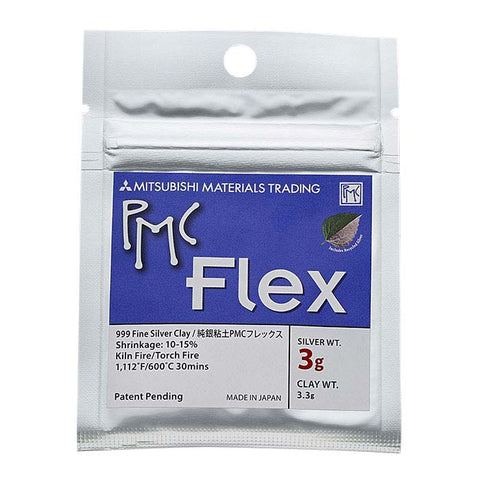Your Cart is Empty

Want your Metal Clay to be flexible?
3 min read
When metal clay is flexible, it opens up so many possibilities.
A number of years ago I read somewhere about mixing metal clay with Glycerin. The claim was that “Glycerin makes the clay more workable, and slows the drying time.” As a vegetable (organic) based product, there definitely seemed to be a compatibility with metal clay binders, but does it work?
As with most tips and tricks that circulate online, confirming this claim requires some in-depth testing. Very often, this type of claim is missing some critical information that is lost by the posters attempt to provide "social media" appealing short comments. When investing so much time creating a piece, losing that work can be heartbreaking. So testing techniques is an ongoing process for me. I need to fully understand the technical aspects of a technique before it can be integrated into my works.
The first time I tried it, using Fastfire ® Bronze Clay, the clay became crumbly and unworkable… :-( This result indicated that the claim may not be applicable to ALL metal clay. If you have used various metal clay brands, you will appreciate how very different each clay performs depending on the task. In all fairness, it is possible that FastFire ® Bronze requires a much lower amount of Glycerin...maybe you want to test?
Fast-forward a year, this time I tested with Goldie ® Bronze.
-
I added 2 drops of Glycerin to approx. 10 grams of freshly prepared clay and worked it into the clay.
-
After rolling out the clay 3-4 times and thoroughly mixing it, unlike the Fastfire ® Bronze Clay, the clay remained soft, pliable and very workable.
-
No impact on the 2 stage firing schedule.
The difference this made to working with the clay was:
-
Extended working time reducing the need to "work quickly" when forming small details.
-
Forms can be manipulated into tighter curves without the clay cracking. Hydrating by spraying with distilled water was still required to avoid cracking when forming.
-
Forms (small embellishments) that would normally require support while drying, hold their form much better and without support.
-
Carving details was a little more precise as the clay texture becomes smoother.
-
After completely drying the working piece, the thin elements that contained Glycerin remained partially flexible. The Glycerin had no impact on the sanding and refining of the elements.

This brooch is an example that contains plenty of dimensional elements (Calla Lilly flowers, Calla leaves) which were formed with Goldie Clay mixed with Glycerin.
The majority of the elements were formed using 2-3 mm (3 cards) thick rolled out clay.
Each piece cut to the form, then rolled or flexed into is final shape.
I have had very positive results adding Glycerin to:
-
Goldie Bronze
-
PMC+
-
PMC OneFire
Important points to consider before adding Glycerin to a clay:
-
Add a little too much can lead to the clay degrading and becoming "un-workable". Attempting to reconstitute the degraded clay into regular clay can risk loosing the entire batch!- so only add a small drop at a time and observe the condition of the clay for any sign of drying / cracking as you fold & knead.
-
I recommend that you only make amounts that will be used immediately. The clay does not store (even in a Hydrator) very well and results in the clay degrading. The dried clay can however be used to create "Dust Granulation" as in Sky Guide 11 - Forming with Flex.

If you would prefer to test working with Flex metal clay, there is of course the option to purchase pre-mixed. This eliminates the experimentation, but give the opportunity to understand the properties before making your own. I cover working with this clay in detail in my On-Line Workshop, which will give you a great foundation to develop your creativity with this medium.
Besides the fact that Glycerin can be beneficial in adding flexibility, the important take away..... test. Avoid taking on-line comments at face value and test how it applies to YOUR methodology or the type of techniques you use. Save the heartbreak!
Leave a comment
Comments will be approved before showing up.
